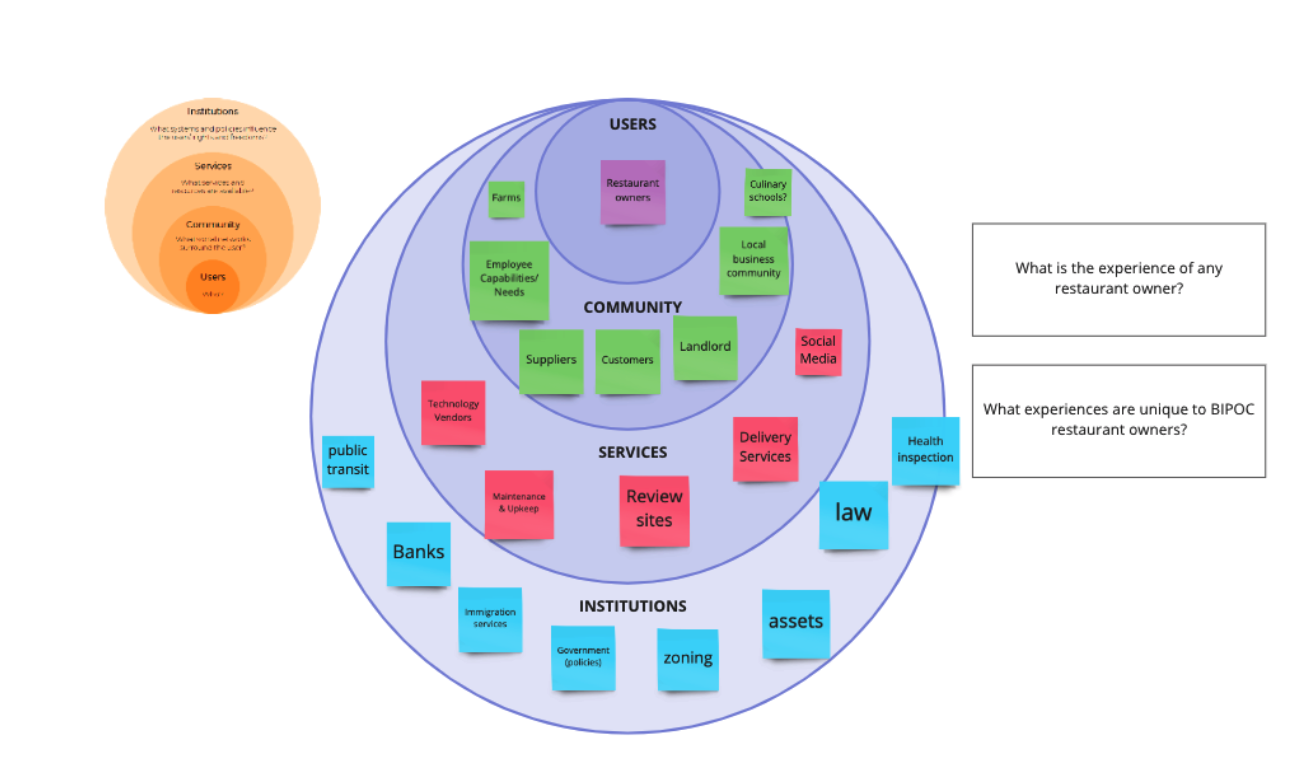TOAST COLLECTIVE
A service framework that aligns with Toast’s strategic plan to support BIPOC-owned restaurants through mentorship and development of social capital
Katara Aleem | Arnab Chanda | Rebeccah Kilty | José Luis Ramos | David Russo
Black-owned businesses have been almost twice as likely to fail as businesses overall during the current pandemic, according to a study by the Federal Reserve Bank of New York. Black and other POC entrepreneurs often face extra hurdles to secure needed loans and investors. The coronavirus pandemic has underscored these systemic racial inequities and therefore, the road to recovery for these businesses is likely to be extra long and challenging. Toast is on a mission to democratize restaurant tech, helping businesses from large chains to independent single-location restaurants efficiently run their point-of-sale, ordering, scheduling, and in-house operations.
How can Toast be a better partner to restaurants owned by people of color?
THE PEOPLE
Through our research, we learned that BIPOC restauranteurs had little or no access to either financial or social capital, which left them feeling isolated and without encouragement.
OUR EARLY THOUGHTS
We believe that Toast is uniquely positioned to tackle the challenges faced by BIPOC restauranteurs through their access to data and institutional knowledge.
But you cannot address a systematic problem with a point solution…
INTRODUCING
*photo by Jeff Siepman
Toast Collective is a proposed service that leverages Toast’s existing data and relationships to take advantage of increased public awareness of the struggles of the BIPOC community. It offers increased access to Coaching, Capital, and Community by raising local engagement and partnering small businesses with Enterprise customers to provide much-needed guidance and advice.
POTENTIAL TOUCHPOINTS
REFLECTIONS
tl;dr:
non-linear; closer to real life
focused much more on the first “diamond”
services solve problems; touchpoints facilitate service
This was my first hackathon experience, and I wasn’t sure what to expect. I had assumed that it would be a much more linear process, moving end-to-end through the Double-Diamond in the way my school projects did. In reality, the path was much less linear and probably closer to that of real-life design.
My teammates were very “cross-functional” - a consultant, two MBA students, and a data scientist, and they were much less familiar with the iterative design process. Not only did this lead to a great diversity of thought but also different ways of synthesizing the data. It also led to a focus on the conceptual aspect rather than the execution of the service.
Throughout the process the relationship between touchpoints and service became clear. In UX Design there is the bias that the “thing” (the touchpoint) is the solution. Through a Service Design lens, I saw that the touchpoints (digital and physical) support the service and that the SERVICE is the solution.
THE FUTURE
Continued research into each pillar of the platform
Iterating on the customer experience in the service
Prototyping through play-acting
Developing physical touchpoints
User testing with members of the target market
Small in-market testing













